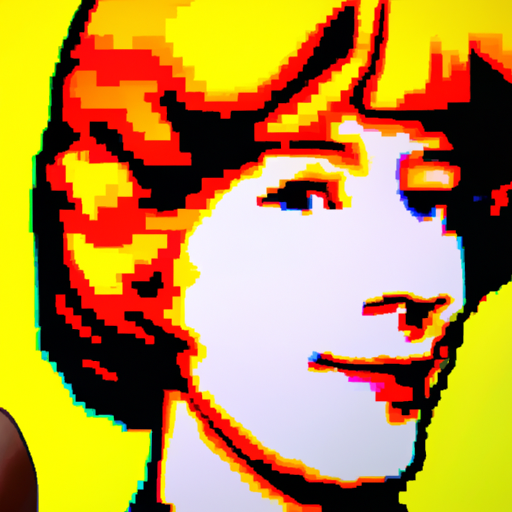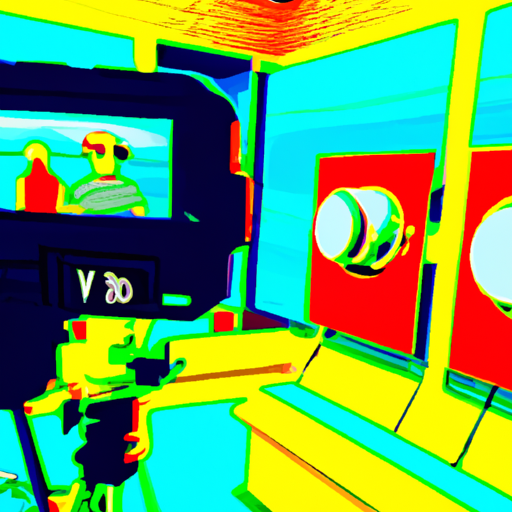
-
Table of Contents
- Illustrating for the Metaverse: Building Virtual Worlds
- The Rise of the Metaverse
- The Role of Illustrators in the Metaverse
- Case Studies: Illustrating for the Metaverse
- 1. Robh Ruppel – Art Director at Epic Games
- 2. Claire Hummel – Concept Artist at Valve Corporation
- The Future of Illustrating for the Metaverse
- 1. Customizable Virtual Avatars
- 2. Storytelling in Virtual Worlds
- 3. Collaborative Design Processes
- Key Takeaways
Illustrating for the Metaverse: Building Virtual Worlds

The concept of the metaverse has gained significant attention in recent years, fueled by advancements in technology and the growing popularity of virtual reality (VR) and augmented reality (AR) experiences. As the metaverse continues to evolve, the need for skilled illustrators to create immersive and visually stunning virtual worlds becomes increasingly important. In this article, we will explore the role of illustrators in building virtual worlds for the metaverse, the challenges they face, and the opportunities that lie ahead.
The Rise of the Metaverse
The metaverse, a term coined by Neal Stephenson in his 1992 science fiction novel “Snow Crash,” refers to a collective virtual shared space, created by the convergence of virtually enhanced physical reality and physically persistent virtual reality. It is a fully immersive digital universe where users can interact with each other and the environment in real-time.
With the advent of VR and AR technologies, the metaverse is becoming a tangible reality. Companies like Facebook, Microsoft, and Epic Games are investing heavily in creating metaverse-like experiences, envisioning a future where people can work, play, and socialize in virtual worlds. This has opened up a whole new realm of opportunities for illustrators to showcase their skills and contribute to the creation of these virtual environments.
The Role of Illustrators in the Metaverse
Illustrators play a crucial role in building virtual worlds for the metaverse. They are responsible for creating the visual elements that bring these digital environments to life. From designing characters and landscapes to crafting intricate details, illustrators use their artistic skills to create immersive and engaging experiences for users.
One of the key challenges for illustrators in the metaverse is the need to balance creativity with technical constraints. Unlike traditional illustration, where artists have more freedom to experiment with different styles and techniques, illustrating for the metaverse requires a deep understanding of the underlying technology and its limitations. For example, illustrators need to consider factors like polygon count, texture resolution, and real-time rendering when creating assets for virtual worlds.
Another important aspect of illustrating for the metaverse is the ability to create visually cohesive and consistent worlds. Virtual environments need to feel believable and coherent, just like the real world. Illustrators need to pay attention to details like lighting, color schemes, and overall aesthetics to ensure that the virtual worlds they create are visually appealing and immersive.
Case Studies: Illustrating for the Metaverse
Let’s take a look at some real-world examples of illustrators who have made significant contributions to the metaverse:
1. Robh Ruppel – Art Director at Epic Games
Robh Ruppel, an accomplished illustrator and art director, has played a crucial role in shaping the visual style of Epic Games’ popular game “Fortnite.” His illustrations have helped create a vibrant and visually stunning virtual world that has captivated millions of players worldwide. Ruppel’s ability to blend fantasy and realism has made him a sought-after artist in the gaming industry.
2. Claire Hummel – Concept Artist at Valve Corporation
Claire Hummel, a concept artist at Valve Corporation, has worked on various virtual reality projects, including the highly acclaimed game “Half-Life: Alyx.” Her illustrations have helped define the look and feel of the game’s virtual world, from the detailed environments to the iconic characters. Hummel’s attention to detail and ability to create immersive worlds have made her a respected figure in the metaverse community.
The Future of Illustrating for the Metaverse
The future of illustrating for the metaverse is filled with exciting possibilities. As technology continues to advance, the demand for skilled illustrators will only grow. Here are some key trends and opportunities to watch out for:
1. Customizable Virtual Avatars
With the metaverse becoming more social and interactive, the demand for customizable virtual avatars is on the rise. Illustrators will play a crucial role in designing unique and visually appealing avatars that allow users to express their individuality in virtual worlds.
2. Storytelling in Virtual Worlds
As virtual worlds become more immersive, the need for compelling storytelling becomes paramount. Illustrators will have the opportunity to create narrative-driven experiences, where their illustrations help convey emotions, set the mood, and guide users through engaging storylines.
3. Collaborative Design Processes
The creation of virtual worlds for the metaverse is a collaborative effort involving artists, designers, programmers, and other professionals. Illustrators will need to adapt to new workflows and collaborate closely with other team members to bring their visions to life.
Key Takeaways
- Illustrators play a crucial role in building virtual worlds for the metaverse, creating visually stunning and immersive experiences for users.
- Illustrating for the metaverse requires a balance between creativity and technical constraints.
- Real-world examples, such as Robh Ruppel and Claire Hummel, showcase the impact of illustrators in shaping the metaverse.
- The future of illustrating for the metaverse includes customizable avatars, storytelling, and collaborative design processes.
In conclusion, illustrating for the metaverse is an exciting and rapidly evolving field that offers immense opportunities for illustrators. As technology continues to advance, the demand for skilled illustrators who can create visually stunning and immersive virtual worlds will only grow. By embracing the challenges and opportunities of the metaverse, illustrators can shape the future of digital experiences and redefine the boundaries of creativity.
